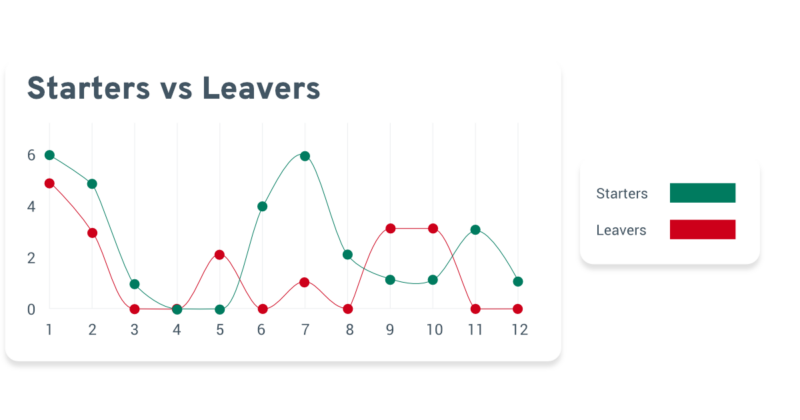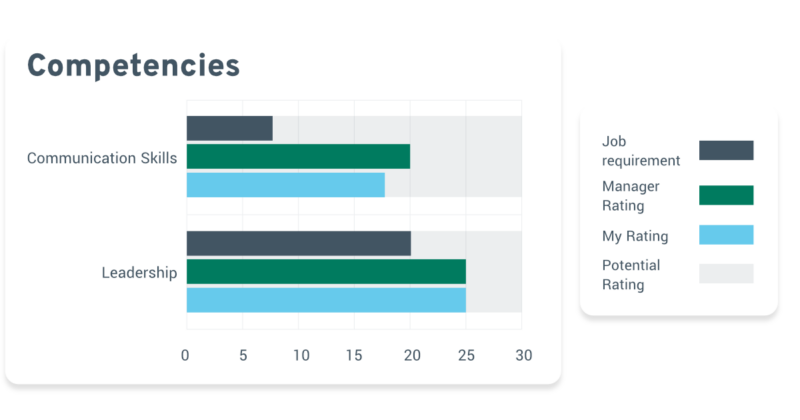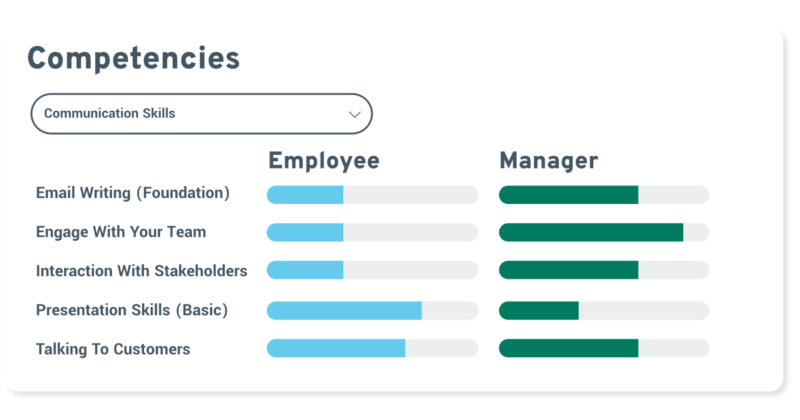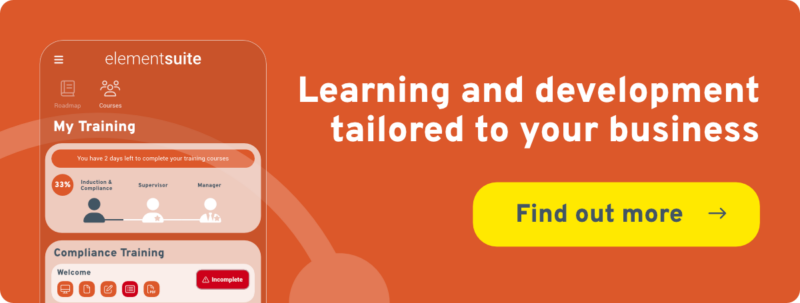Career pathing: An often underutlised tool for retention.
Too often, organisations focus on external hiring for new talent rather than investing in their current employees. They tend to overlook the development and internal mobility of their current workforce; yet, similarly, recent research from LinkedIn shows that employee retention is a top concern for 93% of organisations.
This is because employees are looking for more than just a job – they want opportunities for growth and development. So if career advancement and development opportunities are so important to employees, then why aren’t organisations making it a priority?
The reality is that many organisations struggle with creating clear and transparent career paths for their employees. But it doesn’t have to be this way. As the good old adage goes: “A little can go a long way.” And by implementing some simple strategies, such as personalised career pathing, organisations can significantly improve employee retention rates.
What is career pathing?
Career pathing is the process of creating a clear and structured roadmap for employees to progress in their careers within an organisation. It involves identifying an employee’s current skills, experiences, and goals, and then developing a plan to help them reach their desired career level or position.
So how can organisations use career pathing to improve employee retention?
Identifying the problem
As with every issue, the first step is to identify the problem. And here is where the power of data comes in. By analysing employee turnover rates, organisations can identify which departments or teams have the highest turnover rates and why. This invaluable insight facilitates informed decision-making and empowers proactive measures to address the issue effectively.
Start by looking at the annual turnover of the whole organisation, then zoom in on specific sites, teams or roles. Does the data show that certain roles are not progressing?
Research shows that employees who have made internal advancements are almost 20% more likely to stay with an organisation compared to those who haven’t. Are there employees who have not had any career development opportunities within the past two years? If so, it may be worth having conversations with them to understand their career goals and aspirations.

Gathering employee feedback
Never underestimate the power of employee feedback. Not only can it provide valuable insights into the sentiment of employees towards their career opportunities, but it can also uncover any underlying issues that may be causing high turnover rates.
Here, we recommend sending out regular pulse surveys to employees using elementsuite’s Employee Engagement platform. With surveys created, sent, analysed, reported and shared all in one place, you can quickly gather feedback and make informed decisions without having to sift through endless spreadsheets.
You can then share these insights with your people managers to help them better understand their employees’ career aspirations and take proactive measures to support and develop their team members.
But, it is also worthwhile looking at exit surveys to understand why employees are leaving. Employees who are leaving the company are more open to providing honest feedback. So take advantage of those exit interviews – which I am sure you are – as they can provide real valuable insights into why employees may be leaving.
In conjunction with pulse surveys, you can use exit interview data to better understand the reasons behind high employee turnover and make more informed decisions on how to address them.
In short, never underestimate the power of employee feedback. It’s the key to understanding the root of the problem and creating better solutions that answer their needs.
Creating clear and transparent career paths
Do your employees have a clear understanding of what opportunities are available to them and how they can achieve them?
The answer is often “no”.
Besides the brief discussions during performance reviews and onboarding sessions, many employees are unaware of the different career paths available to them and what skills they need to develop in order to progress. But this can be made easily available with a little job architecture, transparency, and of course, the right tools.
With elementsuite’s Performance Management module, organisations can create unique career roadmaps for each employee or role allowing employees to see where they are currently positioned on the career ladder within the company and what steps they need to take to progress to the next level.


But it’s important to note that not all employees have the same career goals. Some may want to move up to management, while others may want to shift laterally or try something completely new. That is why it is crucial that during the performance review process, employees’ career goals are discussed and reflected in their roadmaps. And these need to be constantly adapted and updated to meet the changing career goals of employees.
Personalised learning programs
Career pathing is not just about setting clear and transparent paths for employees to follow – it’s also about providing them with the necessary tools and resources to achieve their goals.
Think to yourself, what learning do employees need to acquire in order to progress in their careers? And how can we make this accessible and tailored to each employee’s needs?
Here is where you can pair the performance module with elementsuites bespoke Learning and Development module.You can create personalised learning programs for each role or skill and tie that with the employee’s roadmap so that they can access learning modules whenever it suits them best to help enhance their career, regardless of where they are positioned on their roadmap.
And with ELLA, elementsuite’s very own large language model, you can empower employees to take ownership of their own career development by asking specific questions such as “what training can I do to gain the skills to be a people manager in my department?” or “what else do I need to do to progress up my roadmap?”

By providing employees with tailored learning opportunities, you not only support their career growth but also show them that the organisation values their personal development and is invested in their success.
Internal mobility
As HR professionals and people managers, it’s crucial to actively help employees move up their career roadmap. This goes beyond understanding their goals and providing theory-based learning modules.
We know that experience can trump any sort of training or education, so it’s essential to provide employees with opportunities to gain hands-on experience.
Research shows that there is a significant correlation between internal mobility and institutional longevity. Employees who have worked in different roles within the organisation are more likely to stay with the company for longer periods as they feel valued, challenged, and motivated in their work.
This is where elementsuite’s Workforce Management tool comes into play. With its ability to allow employees to work multiple roles, organisations can offer them shifts in different locations and positions to provide them with the opportunity to learn, gain experience – and get paid – while also meeting business needs.
You can even pair employees with more senior team members for shadowing, creating a valuable learning experience while also building relationships and fostering mentorship within the organisation.
Embracing career pathing
In conclusion, career pathing is vital for employee retention. It not only helps employees see a future within the organisation but also shows them that their personal development and growth are valued.
As the saying goes, “the greatest asset of any company is its people,” and organisations must invest in their employees’ career progression to create a loyal and motivated workforce.
With elementsuite’s suite of tools, organisations can easily understand employee sentiment and turnover rates, create clear career roadmaps, offer personalised learning opportunities, and promote internal mobility – all contributing factors to retaining top talent within the organisation.
Don’t let a lack of career advancement opportunities be the reason your employees leave. Invest in career pathing and see the positive impact it has on your organisation’s employee retention rates.
And remember, when it comes to retaining top talent, prevention is always better than cure. Start implementing these strategies today and watch as your employees stay with the company for longer periods, motivated and engaged in their work.
Book a demo with elementsuite and discover how our innovative suite of tools can support your organisation in creating clear career paths, tailored learning programs, and promoting internal mobility.





